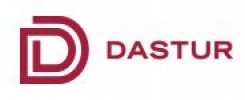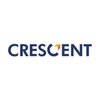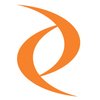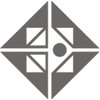Filter interviews by
Neel Metal Products Interview Questions and Answers
35 Interview questions
Purchase refers to the process of acquiring goods or services in exchange for money or other compensation.
Purchase involves identifying needs and selecting suppliers.
It includes negotiating prices and terms of sale.
Example: A company purchasing raw materials for production.
The process may involve issuing purchase orders and managing inventory.
Effective purchasing can lead to cost savings and improved supplier rela...
SCM, or Supply Chain Management, involves overseeing and optimizing the flow of goods, information, and finances from suppliers to customers.
SCM integrates various processes like procurement, production, and logistics.
Example: A company sourcing raw materials from multiple suppliers to ensure timely production.
It aims to reduce costs and improve efficiency across the supply chain.
Example: Just-in-time inventory sy...
Steps of procurement involve identifying needs, finding suppliers, negotiating contracts, and managing relationships.
Identify needs and requirements
Research and find potential suppliers
Request for proposals or quotes
Negotiate terms and conditions
Award contract to selected supplier
Manage supplier relationships and performance
Procurement process is the series of steps involved in acquiring goods or services from external sources.
Identifying the need for a product or service
Researching potential suppliers
Requesting quotes or proposals
Negotiating terms and pricing
Creating purchase orders
Receiving and inspecting goods or services
Processing invoices and payments
Steps of quotation involve gathering requirements, preparing the quote, sending the quote to the customer, negotiating if necessary, and finalizing the deal.
Gather all necessary information and requirements from the customer.
Prepare a detailed quote including pricing, terms, and conditions.
Send the quote to the customer for review and consideration.
Negotiate with the customer if there are any discrepancies or chan...
Implemented a vendor negotiation strategy resulting in 15% cost savings
Identified key cost areas for negotiation
Researched market rates and competitor pricing
Negotiated favorable terms with vendors
Implemented cost-saving measures without compromising quality
Regularly reviewed and optimized vendor contracts
Yes, I regularly work with sheet suppliers to ensure quality materials and timely delivery for our production needs.
I have established relationships with multiple sheet suppliers to compare pricing and quality.
I negotiate contracts and terms with sheet suppliers to ensure favorable terms for our company.
I monitor inventory levels and communicate regularly with sheet suppliers to prevent any shortages.
I work closel...
Cost of a solid bar can be settled by considering the material, size, labor, and overhead costs.
Consider the material cost of the solid bar, such as steel, aluminum, or brass.
Factor in the size and weight of the solid bar, as larger bars will cost more.
Include labor costs for manufacturing the solid bar, including cutting, shaping, and finishing.
Account for overhead costs such as utilities, equipment maintenance, ...
The weight of a sheet can be found by multiplying the area of the sheet by its density.
Calculate the area of the sheet by multiplying its length and width.
Determine the density of the material the sheet is made of.
Multiply the area by the density to find the weight of the sheet.
My expected CTC is negotiable based on the responsibilities and benefits offered by the company.
My expected CTC is based on my experience, skills, and the market rate for the position.
I am open to discussing the compensation package in detail during the interview process.
I am looking for a competitive salary that reflects my qualifications and contributions to the organization.
Neel Metal Products Interview Experiences
48 interviews found
I appeared for an interview in Dec 2024.
An attitude test is a tool that measures a person's beliefs, values, and feelings about different aspects of life. It can also be used to assess a person's motivations and emotional intelligence.
Test to find out if someone has a natural ability for a particular type of work: I had to take an aptitude test before I began training as a nurse. SMART Vocabulary: related words and phrases.
(2 Questions)
- Q1. Tions evaluate a candidate's technical knowledge, experience, and problem-solving skills. They may also assess a candidate's critical thinking and ability to apply technical skills to real-world scenarios.
- Q2. The interviewer may ask you coding questions tailored to languages like Java, Python, C++, JavaScript, etc. Review language-specific syntax, classes, data ...
Interview Preparation Tips
I appeared for an interview in Dec 2024.
(2 Questions)
- Q1. What is Productivity ,cycle time
- Ans.
Productivity is the measure of output produced per unit of input, while cycle time is the total time taken to complete a process.
Productivity is a measure of efficiency, calculated as output divided by input.
Cycle time is the total time taken to complete a process, from start to finish.
Improving productivity often involves reducing cycle times through process optimization.
For example, in manufacturing, productivity can...
- Q2. What is lean manufacturing
- Ans.
Lean manufacturing is a systematic method for eliminating waste within a manufacturing process to improve efficiency and quality.
Focuses on continuous improvement
Eliminates waste in all forms (time, resources, etc.)
Employs tools like 5S, Kanban, and value stream mapping
Involves all employees in the process of identifying and solving problems
Aims to deliver maximum value to customers with minimum waste
(3 Questions)
- Q1. Poke yoke & kaizen
- Q2. Otc Robo teaching & programing
- Q3. What is Productivity and how to calculate weld length per haed and calculate wire consumption
- Ans.
Productivity is the measure of output per unit of input. Weld length per head and wire consumption can be calculated using specific formulas.
Productivity is calculated by dividing output by input (e.g. units produced per hour of labor)
To calculate weld length per head, divide the total weld length by the number of heads working on the project
To calculate wire consumption, multiply the length of the weld by the amount o...
(2 Questions)
- Q1. Electrical maintenance technician question
- Q2. We I have completed electrical work automation
(1 Question)
- Q1. Electrical maintenance expirance 4 years technician post
I applied via Referral and was interviewed in Oct 2024. There were 3 interview rounds.
(2 Questions)
- Q1. About welding types and Machines.
- Q2. About past company experience.
2 person of quality department took my interview they asked so many questions about technical terms of quality like PPM, DPT, Quality inspection, Visual inspection Etc.
(2 Questions)
- Q1. About past company and past job role.
- Q2. Salary expectation
Interview Preparation Tips
I applied via Naukri.com and was interviewed in May 2024. There were 4 interview rounds.
(11 Questions)
- Q1. Basic about yourself.
- Q2. Your family background.
- Ans.
I come from a close-knit family that values education, hard work, and community service, shaping my personal and professional values.
My parents instilled a strong work ethic; my father was a teacher and my mother a nurse, emphasizing the importance of education.
I have two siblings; we often collaborated on projects, fostering teamwork and communication skills from a young age.
Family gatherings were frequent, allowing u...
- Q3. What is your current designation.
- Ans.
I currently hold the position of Senior Executive, overseeing strategic initiatives and driving organizational growth.
Lead cross-functional teams to implement key projects, such as a recent digital transformation initiative that increased efficiency by 30%.
Develop and execute strategic plans that align with company goals, resulting in a 15% increase in market share over the past year.
Foster relationships with stakehold...
- Q4. Explain your company profile.
- Ans.
We are a leading technology firm specializing in innovative software solutions for various industries.
Founded in 2010, we have grown to serve over 500 clients globally.
Our flagship product, XYZ Software, streamlines operations for businesses in retail and logistics.
We prioritize R&D, investing 20% of our revenue annually to stay ahead in technology trends.
Our team consists of over 200 skilled professionals, includi...
- Q5. Your work responsibility and team structure.
- Ans.
As a Senior Executive, I oversee strategic initiatives, manage teams, and drive organizational growth through effective leadership.
Lead a cross-functional team of 15, including marketing, finance, and operations, to achieve quarterly targets.
Develop and implement strategic plans that align with company goals, resulting in a 20% increase in revenue last year.
Facilitate regular team meetings to ensure alignment on projec...
- Q6. What is your Current CTC
- Ans.
My current CTC is competitive and reflects my experience and contributions in the industry.
My current CTC is $150,000 annually, which includes base salary and bonuses.
I have received consistent performance bonuses, averaging 15% of my base salary.
In addition to my salary, I have stock options that have appreciated significantly over the years.
I also receive benefits such as health insurance, retirement contributions, a...
- Q7. What is your Expected CTC.
- Ans.
My expected CTC is negotiable based on the responsibilities and benefits offered by the company.
My expected CTC is based on my experience, skills, and the market rate for the position.
I am open to discussing the compensation package in detail during the interview process.
I am looking for a competitive salary that reflects my qualifications and contributions to the organization.
- Q8. Something about current role and responsibilities.
- Q9. Why you want to left current organization
- Q10. What is your notice period.
- Ans.
My notice period is typically 30 days, allowing for a smooth transition and knowledge transfer.
Standard notice period in my current role is 30 days.
This duration allows for proper handover of responsibilities.
I believe in leaving my team well-prepared for my departure.
If needed, I can negotiate a shorter notice period based on urgency.
- Q11. Why you choose JBM group.
(8 Questions)
- Q1. How can we settle cost of a solid bar
- Ans.
Cost of a solid bar can be settled by considering the material, size, labor, and overhead costs.
Consider the material cost of the solid bar, such as steel, aluminum, or brass.
Factor in the size and weight of the solid bar, as larger bars will cost more.
Include labor costs for manufacturing the solid bar, including cutting, shaping, and finishing.
Account for overhead costs such as utilities, equipment maintenance, and f...
- Q2. How can we find the weight of a sheet.
- Ans.
The weight of a sheet can be found by multiplying the area of the sheet by its density.
Calculate the area of the sheet by multiplying its length and width.
Determine the density of the material the sheet is made of.
Multiply the area by the density to find the weight of the sheet.
- Q3. What is procurement process.
- Ans.
Procurement process is the series of steps involved in acquiring goods or services from external sources.
Identifying the need for a product or service
Researching potential suppliers
Requesting quotes or proposals
Negotiating terms and pricing
Creating purchase orders
Receiving and inspecting goods or services
Processing invoices and payments
- Q4. What is steps of quotation.
- Ans.
Steps of quotation involve gathering requirements, preparing the quote, sending the quote to the customer, negotiating if necessary, and finalizing the deal.
Gather all necessary information and requirements from the customer.
Prepare a detailed quote including pricing, terms, and conditions.
Send the quote to the customer for review and consideration.
Negotiate with the customer if there are any discrepancies or changes n...
- Q5. Why you want to left current organization
- Q6. Do you deal with sheet supplier ? If yes please explain.
- Ans.
Yes, I regularly work with sheet suppliers to ensure quality materials and timely delivery for our production needs.
I have established relationships with multiple sheet suppliers to compare pricing and quality.
I negotiate contracts and terms with sheet suppliers to ensure favorable terms for our company.
I monitor inventory levels and communicate regularly with sheet suppliers to prevent any shortages.
I work closely wit...
- Q7. What is steps of procurement.
- Ans.
Steps of procurement involve identifying needs, finding suppliers, negotiating contracts, and managing relationships.
Identify needs and requirements
Research and find potential suppliers
Request for proposals or quotes
Negotiate terms and conditions
Award contract to selected supplier
Manage supplier relationships and performance
- Q8. Your major parts of industrial experience is belongs to quality and NPD then why you choose purchase ?
- Ans.
I see purchasing as a strategic role that enhances quality and innovation in product development, leveraging my NPD experience.
Purchasing directly impacts product quality; my background in quality assurance allows me to select suppliers who meet high standards.
In NPD, I collaborated with suppliers to innovate materials; in purchasing, I can drive these collaborations from a strategic standpoint.
Understanding market tre...
(7 Questions)
- Q1. What is cost saving
- Ans.
Cost saving refers to the process of reducing expenses in order to increase profits or save money.
Identifying areas of inefficiency and finding ways to streamline processes
Negotiating better deals with suppliers or vendors
Implementing cost-effective solutions or technologies
Reducing waste and optimizing resources
Outsourcing certain tasks to lower-cost providers
- Q2. Have you done any cost saving project in current organization
- Ans.
Implemented cost-saving initiatives that reduced operational expenses by 20% while maintaining service quality.
Led a project to streamline supply chain processes, resulting in a 15% reduction in procurement costs.
Introduced energy-efficient practices in our facilities, saving approximately $50,000 annually on utility bills.
Negotiated better terms with vendors, achieving a 10% discount on bulk purchases, which saved the...
- Q3. How can you deal with sheet supplier.
- Ans.
To deal with sheet suppliers, establish clear communication, negotiate terms, maintain a good relationship, and monitor quality.
Establish clear communication with the supplier to ensure expectations are understood
Negotiate terms such as pricing, delivery schedules, and quality standards
Maintain a good relationship by being respectful, responsive, and fair
Monitor the quality of the sheets received to ensure they meet th...
- Q4. Have you idea about welding process and how many time of welding process.
- Ans.
Yes, I have knowledge about welding processes including arc welding, gas welding, and resistance welding.
Arc welding involves using an electric arc to melt and join metals, such as MIG and TIG welding.
Gas welding uses a flame produced by burning a mixture of oxygen and a fuel gas to weld metals together.
Resistance welding involves passing a high current through the metal pieces to be joined, creating heat at the interf...
- Q5. What is kaizen process . Have you done any kaizen process in current organization
- Q6. What is your team size in current organization.
- Ans.
My team size in my current organization is 15 members.
My team consists of 10 software developers, 3 quality assurance engineers, and 2 project managers.
We work collaboratively on various projects and meet regularly to discuss progress and challenges.
Each team member has specific roles and responsibilities within the team structure.
- Q7. What is your organization turnover.
- Ans.
Our organization turnover rate is 15%.
Our turnover rate has been consistently around 15% for the past few years.
We have implemented various retention strategies to reduce turnover.
The turnover rate in our industry is typically higher than the national average.
We conduct exit interviews to gather feedback from employees who leave.
(6 Questions)
- Q1. Share any Cost saving idea done in past
- Ans.
Implemented a vendor negotiation strategy resulting in 15% cost savings
Identified key cost areas for negotiation
Researched market rates and competitor pricing
Negotiated favorable terms with vendors
Implemented cost-saving measures without compromising quality
Regularly reviewed and optimized vendor contracts
- Q2. What is your team size
- Ans.
My team size is 15 members.
Consists of 10 developers, 3 project managers, and 2 quality assurance specialists
Each team member has specific roles and responsibilities
Regular team meetings and collaboration to ensure project success
- Q3. What is your Organization structure
- Q4. What is your current CTC
- Ans.
My current CTC is competitive and reflects my experience and contributions to the organization.
My current CTC is $120,000 annually, which includes base salary and bonuses.
I have received consistent performance bonuses, averaging around 15% of my base salary.
Additionally, I have stock options that contribute to my overall compensation package.
I also enjoy benefits such as health insurance, retirement contributions, and ...
- Q5. Why you want to switch from current organization
- Q6. Expected notice period time
Interview Preparation Tips
I appeared for an interview in Apr 2025, where I was asked the following questions.
- Q1. How many years of experience at paint shop
- Q2. How many years of experience at ptced line in paint shop
I applied via Approached by Company and was interviewed in Jun 2024. There were 2 interview rounds.
(2 Questions)
- Q1. Electrical
- Q2. Electrical components
(2 Questions)
- Q1. Dual Stater and single line diagram starter and all electrical maintenance expirance 4 years experience
- Q2. Robot expert and press shoop expart and spm expart
Interview Preparation Tips
I applied via Naukri.com and was interviewed in Apr 2024. There were 2 interview rounds.
(1 Question)
- Q1. Self introduction
- Ans. Hlo sir/mam gud afternoon My name is yogesh Bhardwaj from faridabad haryana n village is gaunchhi faridabad for ballabgarh an my graduation completed is btech mechanical for rawal institution and present working for a lakshay Metals Industries pvt ltd from faridabad as a quality engineer for experience in 4 years in these line Thankyou
(4 Questions)
- Q1. Relate experience
- Q2. Mechanical engineering as aQuality engineering for line inspector
- Q3. Responsible for a line inspection
- Ans.
Responsible for conducting line inspections to ensure quality standards are met.
Perform visual inspections of products on the production line
Use measuring tools to check dimensions and specifications
Document findings and communicate with production team for any necessary adjustments
- Q4. Responsible for dailyred bin and inprocessreport
- Ans.
Responsible for managing daily red bin and in-process reports.
Ensure red bins are properly labeled and stored for easy access
Review in-process reports for accuracy and completeness
Communicate any issues or discrepancies to the appropriate team members
Track and document any trends or patterns in red bin and in-process data
Interview Preparation Tips
I appeared for an interview in Mar 2025, where I was asked the following questions.
- Q1. Press shop machine
- Q2. Hydraulic machine
- Q3. Component department
I applied via Approached by Company and was interviewed in Jun 2024. There were 4 interview rounds.
(2 Questions)
- Q1. I am die fitter
- Q2. Permanently job
(2 Questions)
- Q1. Die fitter tool room
- Q2. Tool room for Die Maker
(2 Questions)
- Q1. Tool and Die Maker
- Q2. Tool and Die Maker
(2 Questions)
- Q1. Tool and Die Maker
- Q2. Tool and Die Maker
Interview Preparation Tips
- Die fitter
- Tool and Die
Top trending discussions






Neel Metal Products Interview FAQs
The duration of Neel Metal Products interview process can vary, but typically it takes about less than 2 weeks to complete.
Tell us how to improve this page.
Neel Metal Products Interviews By Designations
- Neel Metal Products Junior Executive Interview Questions
- Neel Metal Products Purchase Executive Interview Questions
- Neel Metal Products Senior Executive Interview Questions
- Neel Metal Products Electrical Technician Interview Questions
- Neel Metal Products Quality Engineer Interview Questions
- Neel Metal Products Senior Engineer Interview Questions
- Neel Metal Products Maintenance Engineer Interview Questions
- Neel Metal Products Process Engineer Interview Questions
- Show more
Interview Questions for Popular Designations
- Junior Executive Interview Questions
- Senior Executive Interview Questions
- Associate Interview Questions
- Analyst Interview Questions
- Software Engineer Interview Questions
- Senior Engineer Interview Questions
- Associate Software Engineer Interview Questions
- Graduate Engineer Trainee (Get) Interview Questions
- Show more
Overall Interview Experience Rating
based on 53 interview experiences
Difficulty level
Duration
Interview Questions from Similar Companies
Neel Metal Products Reviews and Ratings
based on 818 reviews
Rating in categories
|
Assistant Manager
199
salaries
| ₹5.1 L/yr - ₹12 L/yr |
|
Executive
196
salaries
| ₹2.5 L/yr - ₹6.5 L/yr |
|
Senior Executive
185
salaries
| ₹3.5 L/yr - ₹8 L/yr |
|
Deputy Manager
92
salaries
| ₹6 L/yr - ₹12.2 L/yr |
|
Quality Engineer
61
salaries
| ₹1.1 L/yr - ₹4.8 L/yr |

Super Smelters

Ashapura Group Of Industries

TRL Krosaki Refractories

MN Dastur & Company
- Home >
- Interviews >
- Neel Metal Products Interview Questions














